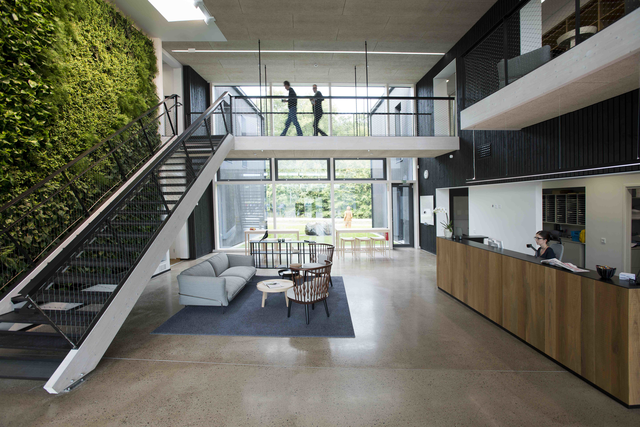Opportunity through action: Skanska
We Mean Business
While environmental performance in the built environment has been driven by green building certifications such as BREEAM and LEED in recent years, Swedish-headquartered construction and development company Skanska is blazing its own trail to realize its objective to be the leading green developer and contractor. Since 2010, Skanska Business Units have set Green and Deep Green objectives based on the company’s own tool – the Skanska Color Palette™, which has produced a stream of green projects.
Taking significant steps beyond regulation is rated Green on the Color Palette. While Deep Green projects are designed to have a near-zero impact on the environment, both during their construction and operation, according to Skanska’s Energy, Carbon, Materials and Water criteria.
“Our partners and clients prefer to work with us rather than other companies because we are a greener and more sustainable alternative that can help them make long-term financial savings,” explains Anna Åkesson, Senior Environmental Manager, Green and Community Investment, at Skanska AB. Skanska is an example of a global construction company using its green credentials to its advantage.

“Our Business Units set their own Green commitments and environmental objectives. For example, our Commercial Development units aim to develop only Green and Deep Green projects by 2020,” informs Åkesson. “This drives the market, and even gains a greater market share for us.”
“Staying one step ahead of regulation helps to future proof our business,” explains Åkesson. Skanska in the UK redeveloped its regional engineering and servicing hub in Doncaster – Bentley Works – into a Deep Green facility that uses 67 per cent less energy than the UK code and is designed to be net-zero energy. Its Väla Gård office building in Helsingborg, Sweden (above), is an energy positive building and also met Skanska’s Deep Green Materials criteria. The Solallén townhouse project (below) is another of Skanska’s recent Deep Green projects, which became Sweden’s first energy positive residential neighborhood.

Such best practice also leads to commercially-exploitable innovations. The Skanska Deep Green Cooling (DGC) solution for example, which uses deep bore-holes as ground storage to cool buildings, was trialed in Sweden (including its own headquarters in Stockholm) and has since been rolled out globally. Innovative techniques to lay road surfaces by re-using rather than removing much of the existing surface have also been successful: “Such solutions make significant financial and environmental savings for the client and for us because we don’t have to use as much raw material,” says Åkesson.
Skanska is also building a knowledge base for a climate-resilient future, such as extremely water efficient buildings, and good stormwater management. “An extreme example is the replacement University Medical Center we helped to construct in New Orleans in the US following Hurricane Katrina,” explains Åkesson. “The medical center was constructed with sacrificial administrative functions on the ground floor, emergency and operating rooms on higher floors, and mechanicals on the roof, to make the hospital more resilient to future flooding.”
Large investors, from pension funds to banks, have been attracted by Skanska’s leadership position on climate change. “In just the last two years we’ve seen a big increase in banks and investors coming to ask about our work and how they can support us.“
Åkesson explains “Of course we need to make a profit, but we also have a responsibility and knowledge base that can help clients and society. We believe that we can create profit with purpose, which also helps us to access green funding and create new business opportunities.”
—

